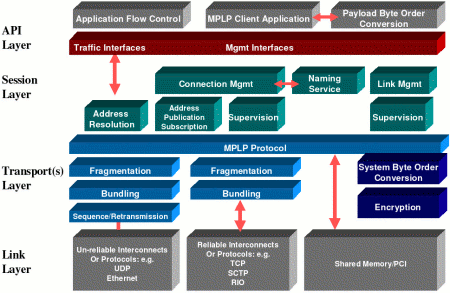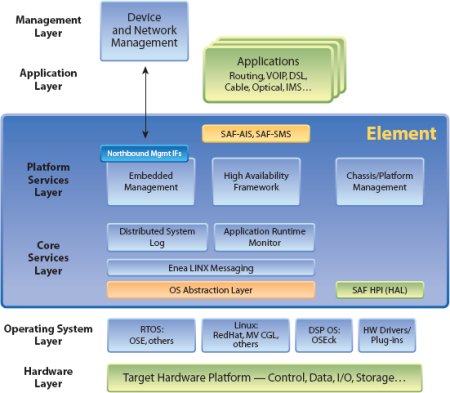High-performance Linux IPC stack upgraded
Jan 28, 2008 — by Eric Brown — from the LinuxDevices Archive — 8 viewsEnea has released a major upgrade to its highly scalable open source (BSD or GPL) interprocess communications stack for Linux. Linx 2.0 for Linux aims to let Linux-based telecom equipment interoperate better with Enea's Element high-availability middleware and OSE RTOS, while offering full backward and forward compatibility for in-field upgrades, Enea says.
Enea originally developed Linx as part of its proprietary OSE RTOS and OSEck RTOS for DSPs. Then, as Carrier Grade Linux began to catch on, Enea decided to port Linx to Linux, to save customers from the onus of using multiple IPC mechanisms in distributed, heterogenous equipment that combines Linux with OSE/OSEck. The initial release of Linx for Linux happened in August of 2007.
In the world of telecom IPC stacks, Linx competes with good ol' Unix sockets, and with a better-known open source IPC stack called TIPC, long supported by Enea competitor/partners Wind River and MontaVista. Compared to TIPC, Linx is claimed to perform about 20 percent better, while offering better multi-core support, greater scalability (it runs on teeny DSPs and massively parallel multiprocessors), and most importantly, “transparency” across chip, OS, and interconnect boundaries. Such transparency simplifies application development, Enea claims, by allowing scalability through hardware additions, without requiring application code changes.

Linx 1.0 architecture
(Click to enlarge)
Version 2.0 of Linx is “completely forward-compatible with newer versions, and vice-versa,” says Enea. As Linx nodes hook up via the initial connection-establishment protocol, version identity is swapped, and the nodes automatically negotiate the lowest common denominator of features and protocol versions, according to the vendor.
Stated Michael Christofferson, Enea's director of product management, “Upgrading the basic communications protocol in a deployed system has been a large problem. However, our new protocol and feature negotiation addition allows upgrades to portions of the system without affecting the whole system, and also enables new subsystems to be added to an existing system without regard to communications protocol compatibility issues.”
Enea says that OSE and the OSEck variant for DSPs are deployed in “about half” of the world's 3G mobile phones and base stations. In recent years, Enea has been increasingly focused on diversifying its product line beyond signal plane RTOSes, promoting products that include the Element high-availability middleware suite, Polyhedra real-time database, and the Enea Accelerator Program, a comprehensive product suite and ecosystem. Linx is sold as a component of the Element middleware stack (see diagram below), with which it appears to be tightly integrated.

Linx acts as a core services function in the Enea Element architecture
Availability
Enea Linx for Linux version 2.0 is available now as a free open source download at SourceForge.net. More information on Linx can be found here.
This article was originally published on LinuxDevices.com and has been donated to the open source community by QuinStreet Inc. Please visit LinuxToday.com for up-to-date news and articles about Linux and open source.